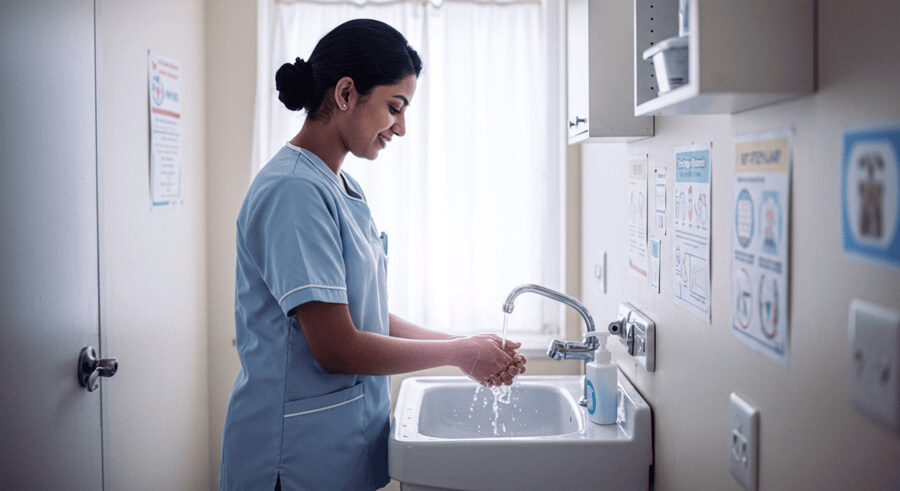The Scale of the Problem
The World Health Organization (WHO, 2022) estimates that 15% of hospitalised patients in low- and middle-income countries (LMICs) will acquire at least one healthcare-associated infection (HAI).
In Africa, surgical site infection rates exceed 20% in some facilities. That’s nearly triple the rates seen in high-income countries (Lancet Infectious Diseases, 2020). These infections prolong hospital stays, increase healthcare costs, and can be deadly.
A WHO cost–benefit analysis found that implementing basic infection prevention and control (IPC) measures in LMICs could save up to US$7 for every US$1 spent, by reducing additional treatment costs and freeing up scarce hospital beds.
1. Hand Hygiene: The First and Most Important Defence
It’s almost too simple and too often overlooked. Proper hand hygiene alone can cut HAI rates by up to 50% (WHO Patient Safety Report, 2019). In high-resource environments, this means running water, soap, and alcohol rubs at every bedside.
In rural African or Asian clinics, it often means being resourceful:
- Producing alcohol-based hand rub locally using WHO’s open-access formula.
- Installing tippy taps – low-cost, foot-operated water containers in wards and patient areas.
In a Ugandan rural health centre, introducing a locally made alcohol rub reduced neonatal sepsis rates by 38% in just six months (Ministry of Health Uganda, 2021).
2. Rational PPE Use and Maintenance
Personal protective equipment (PPE) shortages are a reality in many LMICs. The solution isn’t to use more — it’s to use better. Training caregivers on rational use protocols ensures that PPE is worn for the right tasks and maintained safely when reuse is necessary under resource constraints.
A 2021 BMJ Global Health study in Nepal found that facilities introducing rational PPE protocols cut shortages by 30% without increasing infection rates.
3. Environmental Hygiene: The Unseen Battlefield
Infection doesn’t just spread from people — it spreads from surfaces, bedding, and poorly managed waste. Simple, routine cleaning of high-touch areas (bed rails, doorknobs, mobile equipment) with chlorine solutions or other local disinfectants can significantly reduce transmission.
In Tanzania, a Ministry of Health initiative training hospital cleaners in structured environmental hygiene reduced hospital-acquired infection rates by 18% within six months.
4. Educating Patients and Families
In many African and Asian facilities, family members are active caregivers — feeding patients, changing bedding, even helping with hygiene. Without basic IPC knowledge, they can unknowingly spread infection. Integrating family education into the care process is essential.
In the Philippines, a provincial hospital piloted a “Family IPC Orientation” given at admission. Within three months, hand hygiene compliance among family caregivers rose from 22% to 64%, according to hospital audits.
Oakvale’s Perspective
Infection control is sometimes seen as a “technical add-on,” but in reality, it’s a foundation of safe healthcare. For caregivers in LMICs, the most effective IPC measures are often the simplest and cheapest — provided they are implemented consistently.
Our philosophy at Oakvale Learning is that every caregiver can be a frontline infection fighter. We train for both skill and mindset: instilling the understanding that small, disciplined actions prevent suffering, save lives, and protect healthcare systems already under strain.
References
- WHO, 2022 – Global Report on Infection Prevention and Control
- Lancet Infectious Diseases, 2020 – Surgical Site Infection Rates in Africa
- WHO Patient Safety Report, 2019 – Hand Hygiene Impact
- Ministry of Health Uganda, 2021 – Rural Alcohol Rub Program Results
- BMJ Global Health, 2021 – PPE Rational Use Study in Nepal
- Ministry of Health Tanzania, 2020 – Environmental Hygiene Initiative Outcomes
